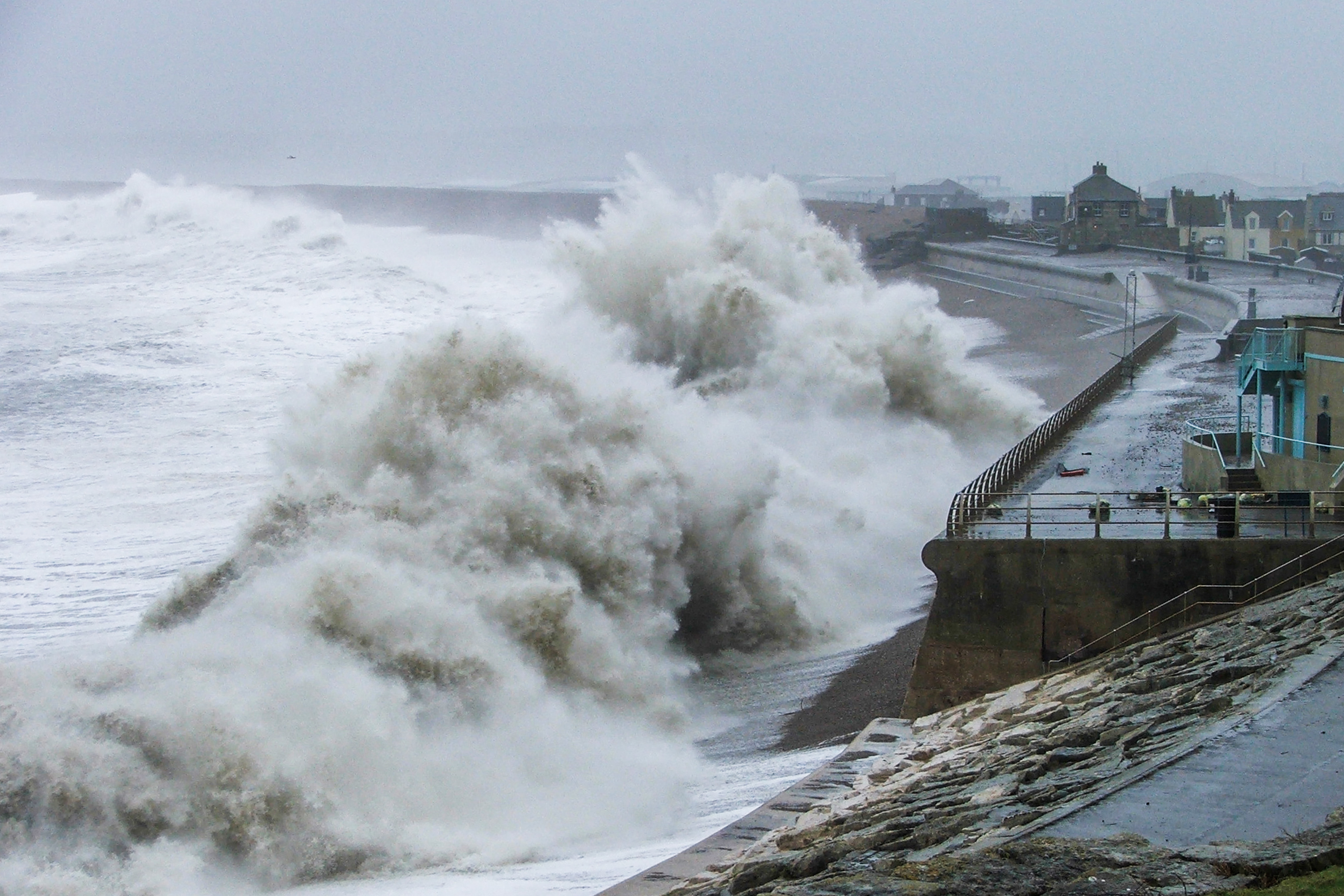24 April 2018
WASHINGTON — Average winter wave heights along the Atlantic coast of Western Europe have been rising for almost seven decades, according to new research.
The coastlines of Scotland and Ireland have seen the largest increases, with the average height of winter waves more than 10 millimeters (more than 0.4 inches) per year higher than in 1948. That is more than more than 0.7 meters (2.3 feet) in total.
That has also led to increased wave heights during extreme weather conditions, with levels off the Irish coast increasing 25 millimeters (1 inch) per year during the past 70 years, representing an average increase of 1.7 meters (5.6 feet).
The study, accepted for publication in Geophysical Research Letters, a journal of the American Geophysical Union, was conducted by scientists at the National Centre for Scientific Research (CNRS) in France, the University of Bordeaux and the University of Plymouth.
They say its findings are important for scientists and coastal managers looking to predict future wave heights, and take measures to protect coastal communities across Western Europe.
“The height of waves during winter storms is the primary factor affecting dune and cliff erosion, explaining up to 80 percent of the shoreline variability along exposed sandy coasts,” said Bruno Castelle, Senior Scientist at CNRS. “So any increases in wave heights, and greater frequency of extreme storms, are going to have a major impact on thousands of communities along the Atlantic coastlines of Western Europe. This work and our other recent studies have shown both are on the rise, meaning there is a real need to ensure the Atlantic coasts of Europe are protected against present and future storm threats.”

Waves crashing onto Chesil Beach in Dorset during the winter of 2013/14.
Credit: Tim Poate, University of Plymouth.
The study used a combination of weather and wave hindcasts, and actual data, to measure changes in wave height and variability on coastlines from Scotland in the north to Portugal in the south.
These were then correlated against two climate indices – the North Atlantic Oscillation (NAO), which has long been known to affect climate variability in the Northern Hemisphere, and the West Europe Pressure Anomaly (WEPA), based on atmospheric pressure along the Atlantic coast of Europe.
The results showed that all areas had seen an average rise in winter wave heights during this period, although it varied from 10 millimeters (0.4 inches) per year in Scotland, to 5 millimeters (0.2 inches) per year in France and 1 millimeter (0.04 inches) per year in Portugal.
The same scientists have previously shown that the winter storms of 2013/14 were the most energetic to hit the Atlantic coast of western Europe since records began in 1948.
“Whether extreme winters such as that of 2013/2014 will repeat more frequently and/or further intensify in the future is a key issue for the Atlantic coast of western Europe,” said Gerd Masselink, lead of the Coastal Processes Research Group at the University of Plymouth. “It is therefore important to investigate if these extreme winters are already happening with increasing regularity and intensity, and why this is happening. If human-induced climate change is responsible, we need to seriously start thinking about decreasing our vulnerability to extreme storm events and pro-actively adapt to a more energetic future wave climate.
###
The American Geophysical Union is dedicated to advancing the Earth and space sciences for the benefit of humanity through its scholarly publications, conferences, and outreach programs. AGU is a not-for-profit, professional, scientific organization representing 60,000 members in 137 countries. Join the conversation on Facebook, Twitter, YouTube, and our other social media channels.
The University of Plymouth is renowned for high quality, internationally-leading education, research and innovation. With a mission to Advance Knowledge and Transform Lives, Plymouth is a top 50 research university with clusters of world class research across a wide range of disciplines including marine science and engineering, medicine, robotics and psychology. A twice winner of the Queen’s Anniversary Prize for Higher Education, the University of Plymouth continues to grow in stature and reputation. It has a strong track record for teaching and learning excellence, and has one of the highest numbers of National Teaching Fellows of any UK university. With 21,000 students, and a further 17,000 studying for a Plymouth degree at partner institutions in the UK and around the world, and over 100,000 alumni pursuing their chosen careers globally, it has a growing global presence.
Notes for Journalists
Journalists and public information officers (PIOs) of educational and scientific institutions who have registered with AGU can download a PDF copy of the article by clicking on this link: https://agupubs.onlinelibrary.wiley.com/doi/10.1002/2017GL076884
Journalists and PIOs may also order a copy of the final paper by emailing a request to Nanci Bompey at [email protected]. Please provide your name, the name of your publication, and your phone number.
Neither the paper nor this press release is under embargo.
“Increased winter‐mean wave height, variability and periodicity in the North‐East Atlantic over 1949‐2017”
Authors:
Bruno Castelle: CNRS, UMR EPOC, France; and University of Bordeaux, UMR EPOC, France;
Guillaume Dodet: LETG-Brest Geomer UMR 6554 CNRS, Institut Universitaire Europeen de la Mer(UBO), Plouzane, France;
Gerd Masselink and Tim Scott: Coastal Processes Research Group, School of Biological and Marine Sciences, Plymouth University, UK.
Contact information for the authors:
Bruno Castelle: [email protected]
Gerd Masselink: [email protected]
Nanci Bompey
+1 (202) 777-7524
[email protected]
University of Plymouth Press Contact:
Alan Williams
+44 (0)1752 588004
[email protected]